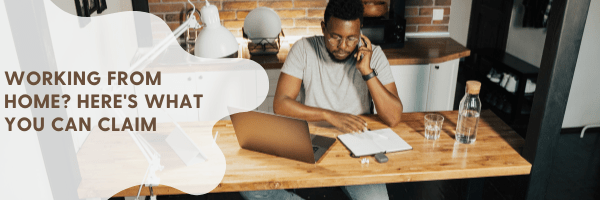Working from home for the self employed
For those of us who own our own business as a sole trader have long been able to claim for 'office' expenditure when our office is in our home. If you read the HMRC website page - https://www.gov.uk/expenses-if..., you'd be forgiven for thinking that HMRCs explanation on how to claim lacks clarity. That's because much of the information given is open to interpretation first, and if HMRC feel you're then doing something wrong, they'll tell you.
Their simplified explanation on what you may claim probably leads most to read down to the bottom of the page and choose the simplified expenses route instead, but many are missing out on exactly what they're entitled to.
So what's the difference between an actual cost claim and a simplified claim?
Quite simply, in most cases, it will probably amount to saving several hundred pounds in tax.
Simplified expenses are calculated using a tiered flat rate per month based on how many hours a month you work from home. You must work at least 25 hours a month in order to qualify and the rate ranges from £10 - £26 per month. Basically you total up your hours per month and work out how much the rate is for each month. Add these together and this is your total claim, the maximum of which would be £312.
Compare this to an actual cost claim where you can add in a proportion for gas, electricity, council tax, mortgage interest or rent and internet and telephone costs, based on the amount of qualifying rooms you have in your property, the amount of space you utilise for your 'office' and how many hours you work from home. Average claims are in the region of £400-£600 per month where owners work more than 35 hours a week at home. This could mean an average saving of over £1100 in tax based upon these amounts.
How do you work it out actual cost claims?
The first thing you need to do is work out the area you work in, if your office is set out as it's own separate space, i.e. it's in a spare bedroom or reception room that is used only for that purpose, then you can claim against the room as a whole. You then need to add up your qualifying rooms, kitchens, hallways, landings, bathrooms and wc's are all non-qualifying but if you've renovated a garage or have an outbuilding especially created as an office then you must include that as a qualifying room. So you have 2 bedrooms and a living room as qualifying rooms, with one bedroom set up as an office, this means you can claim a third of all qualifying actual costs.
It's a little more complicated if you only use part of a room, for example you might have a desk setup in a bed room, and this takes up half of the space, or you use a proportion of the dining room table. In these cases you will have to further proportion the room rate against the occupying rate. In the bedroom example, as the desk area takes up half of the room, and there are once again only 3 qualifying rooms then you will be able to claim half of the third that was calculated before.
And if that seems complicated, you would then have to further proportion the room and occupancy rate, by the amount of time you spend working in that space each month, if your average hours are below 35. Say you work 35 hours a week but only half of that time is spent at home working at your desk in the second bedroom that your child occupies. The half of the third you'd calculated before will now be reduced by another half to take into account that you only work 50% of your time at home. In other words, (((£expense/3)/2)/2). If the expense was £850 rent per month then the amount you could claim would be £850 for the whole year. Still better than £312, and realising a tax reduction of £107.
Little wonder so many choose the easier simplified expenses route though. So we, at Parks Bookkeeping Services, have created a calculator just for you. Please clink the link below to access it. And happy claiming.

